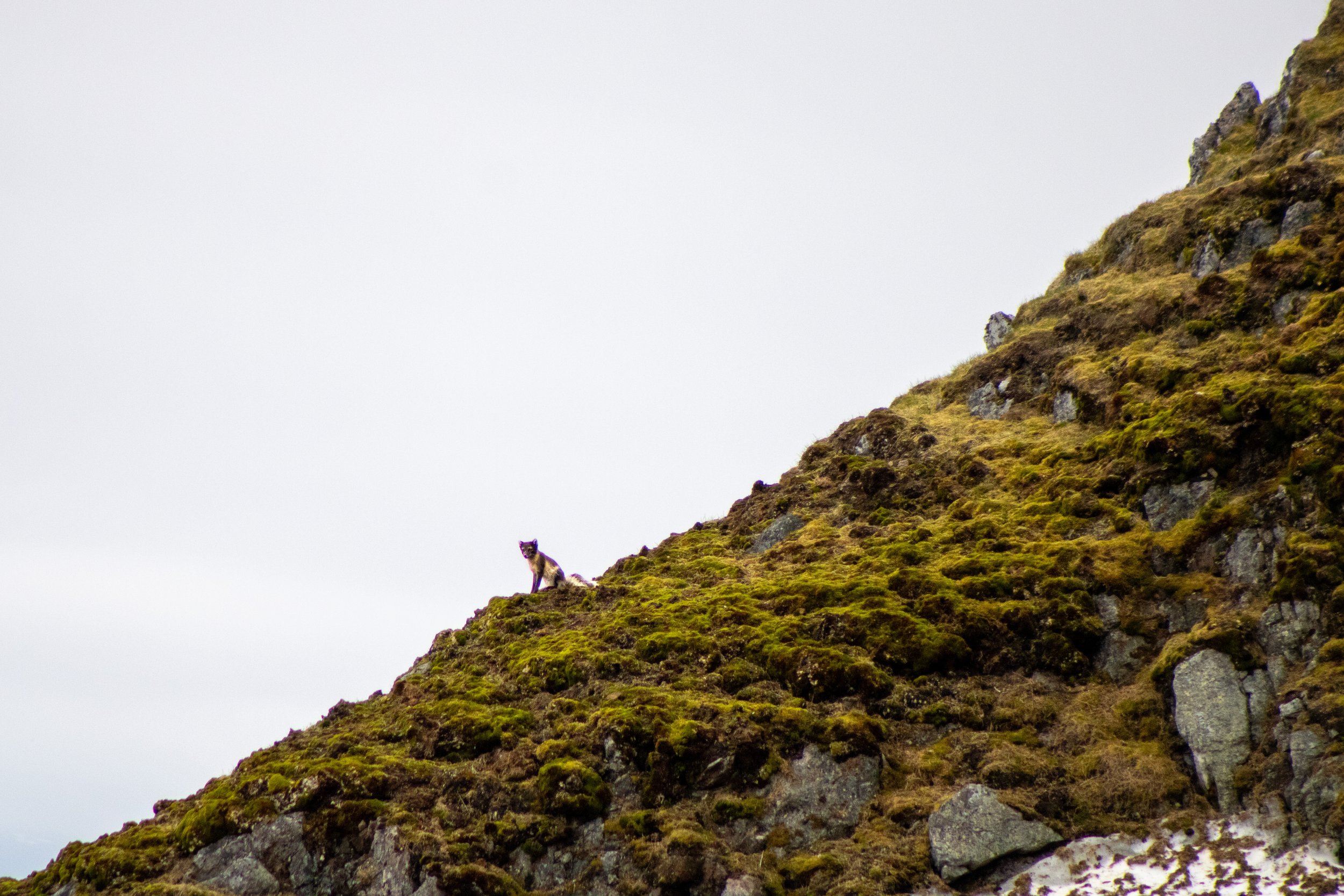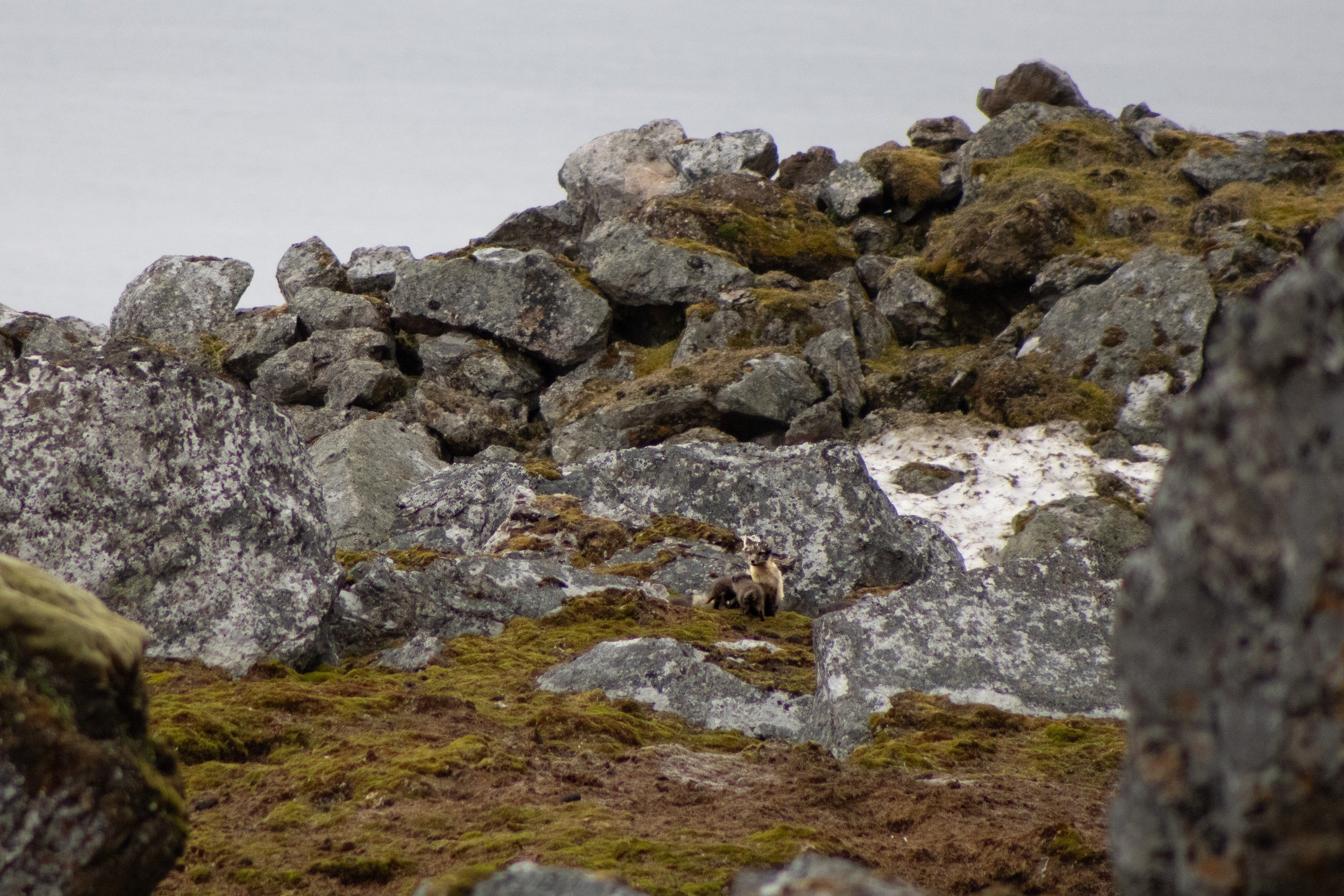Polar Blog Series Part II: The Arctic
Chapter 7: What does the Fox Say?
We had been searching for an Arctic fox for days. Two of our fellow passengers, who had been to Svalbard many times before, particularly liked foxes, so we desperately looked for them as the days went on. On June 28th, the weather became calm and clear, which permitted us to land at Fuglehuken, the northernmost tip of the island of Prius Karls Forland. This narrow, elongated island is just west of the main western side of the island of Spitsbergen, and can only accommodate small ships. Our expedition leader had never landed here in all his travels to the archipelago, so we were very lucky.
Prancing reindeer crossing
A mountain rises at the tip of the island, and various bird species nest on the cliff face. These included gulls, little auks, puffins, and snow buntings. With the thousands of birds came thousands of nests—and with the nests, came foxes. Eager to see the elusive Arctic fox, we landed with anticipation and hiked up the hill to the base of the cliff. Passing reindeer along the way, we came to a good stoping point and stood to watch the birds. It was a cacophony of activity. Numerous different colors flashed across the sky as birds swooped to and from their nests on the vertical wall.
Our first fox enjoying the view
And then, my wife saw it—“Fox!” It was incredible how well it blended in with the green and brown environment. We could only see it because it was moving, darting between the rocks. Black, brown, white and gray, the size of a house cat, the fox kept checking back at us as it quickly climbed the hill. Eventually it reached a good vantage point, sitting and surveying the landscape for a while, before curling up and laying down for a nap. A charge of electric excitement surged through the group. The fox was so different from anything else we had seen thus far. I kept thinking about the phrase ‘clever as a fox,’ and how apt that comparison is. They definitely look intelligent, almost devious, and they move with purpose and cunning.
Dashing through the snow
After enjoying the birds and the fox on the hillside for some time, we started to turn to head back to the beach. But one of our guides yelled to go back to the front of the group. For a split second I thought he had seen a polar bear, and that there was danger. Instead, we turned to see another fox, a momma with five kits. They were so cute! Solid gray and tiny, they pounced on each other, suckled at their mother, and explored the landscape. Mom kept a watchful eye on us constantly, as the kits played on obliviously. It was magical to see foxes so young and so close.
Fox family sighting
We thought we had seen it all as we finally started our return downhill to the landing site. But we saw another, and another fox. They ran along the low-lying hills. Our guides explained that although foxes are intensely territorial, the nesting site was a huge food source. The foxes were vocalizing to each other, likely proclaiming their territory boundaries. In all we saw twelve foxes, hardly believing what we were witnessing. It was evident how special Svalbard was. In an environment so inhospitable, there was all kinds of life everywhere. It felt like another world, but it was still Earth. It reinforced how unique our planet is. And we learned what the fox says.





